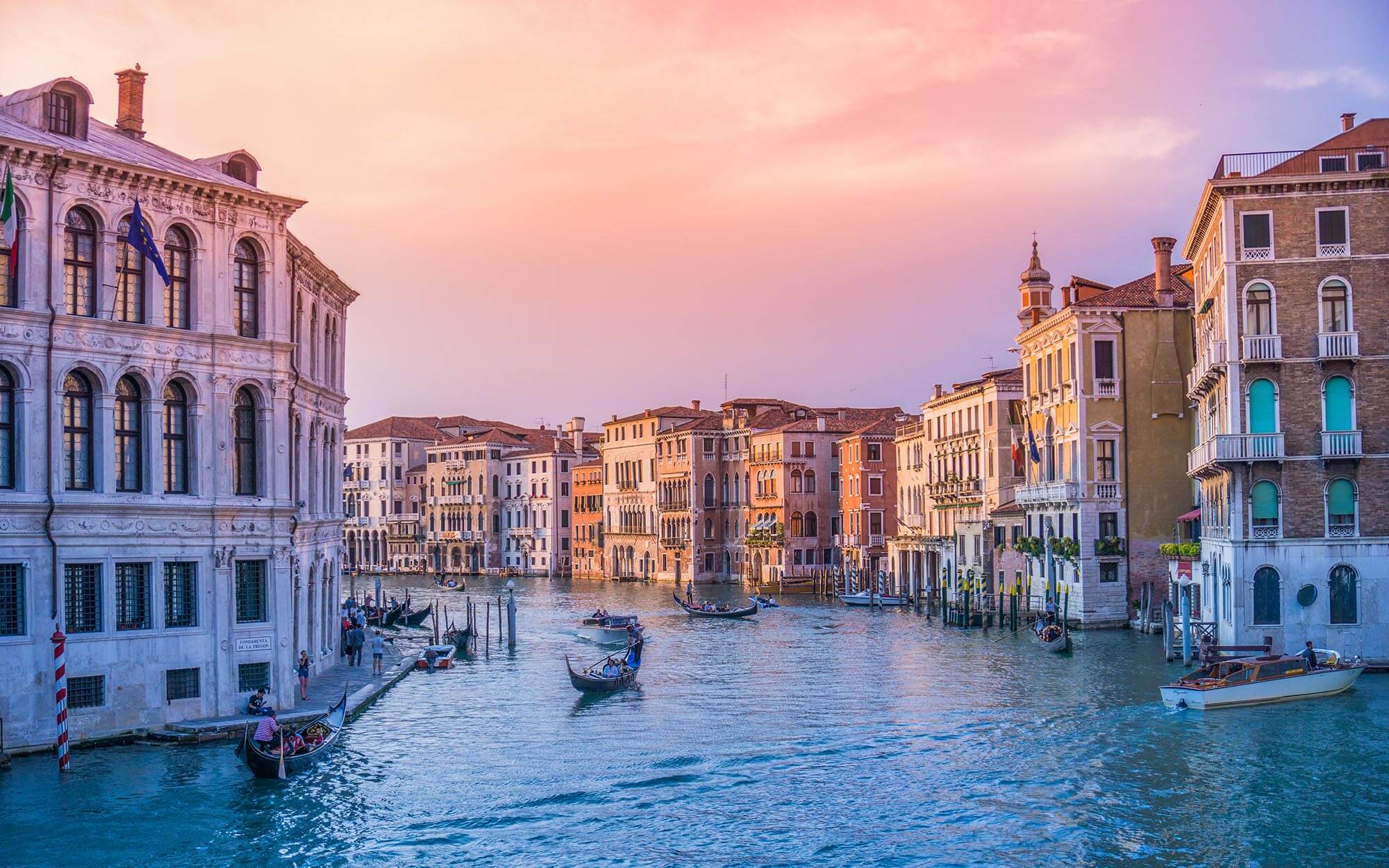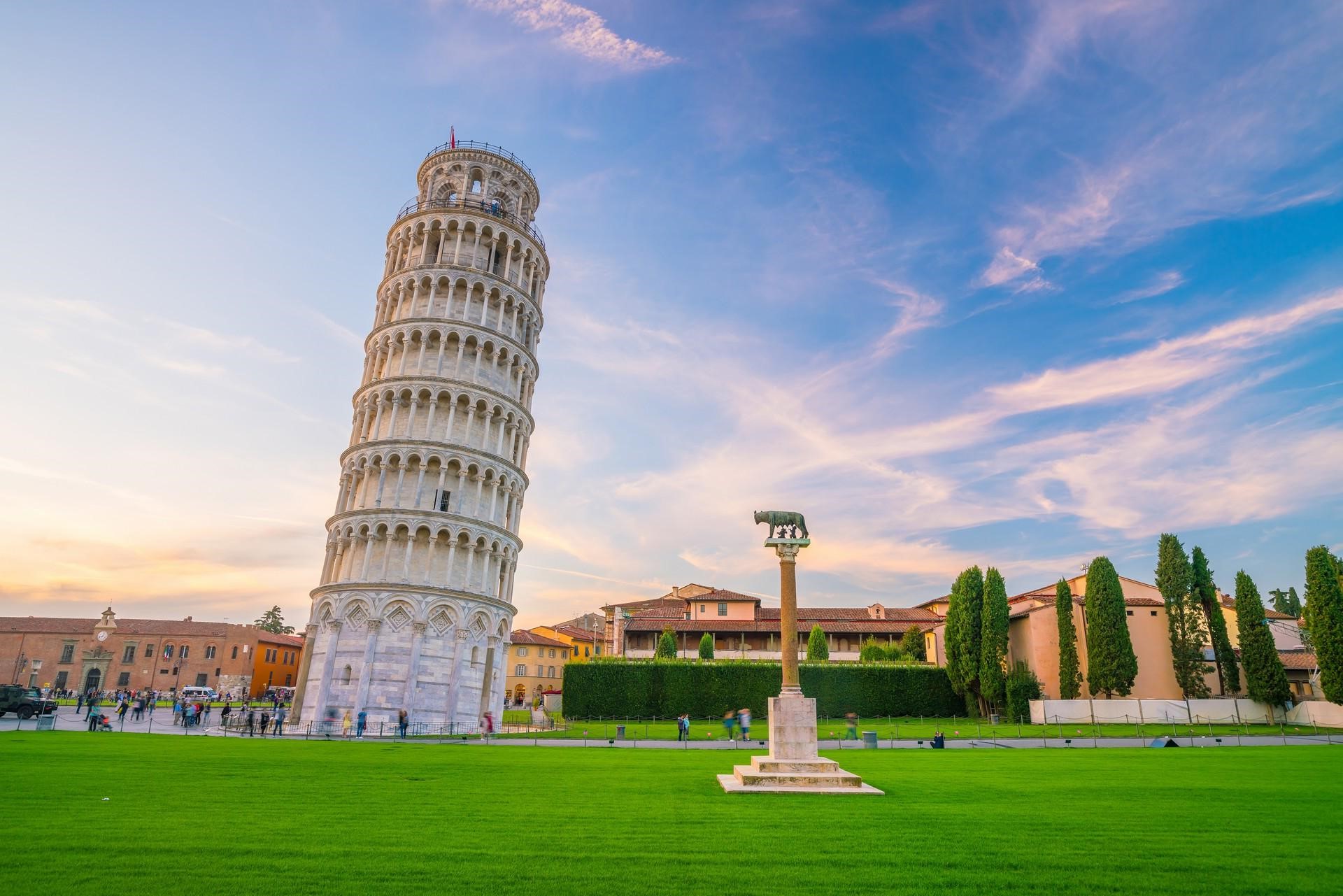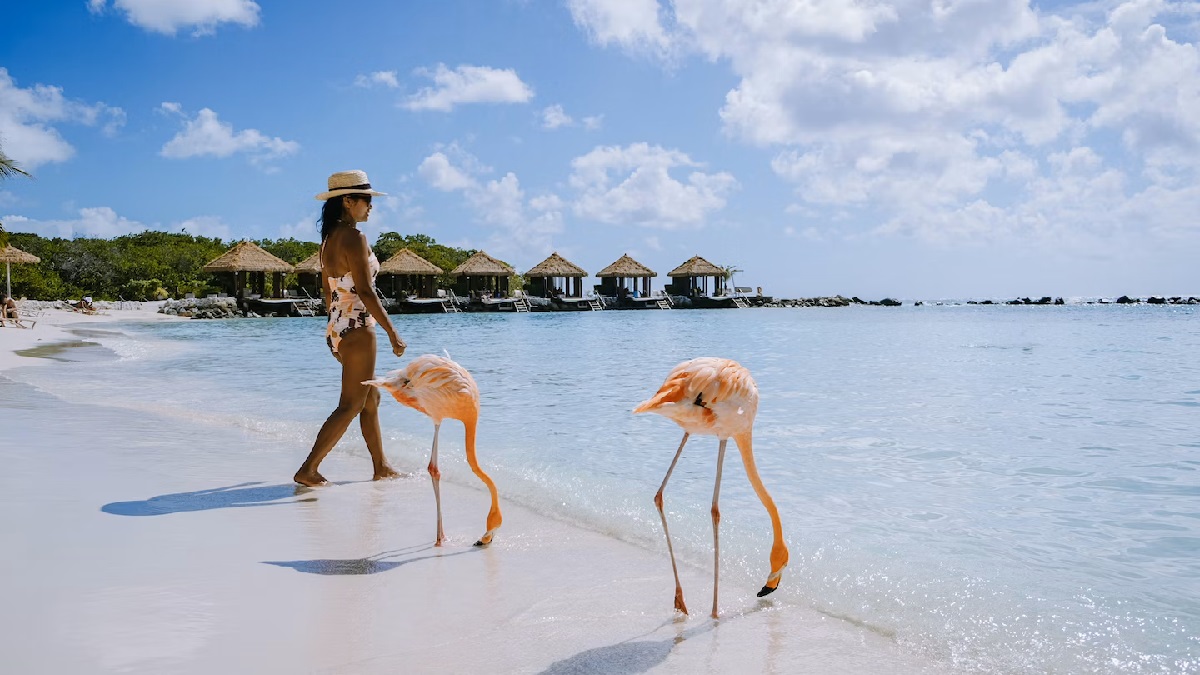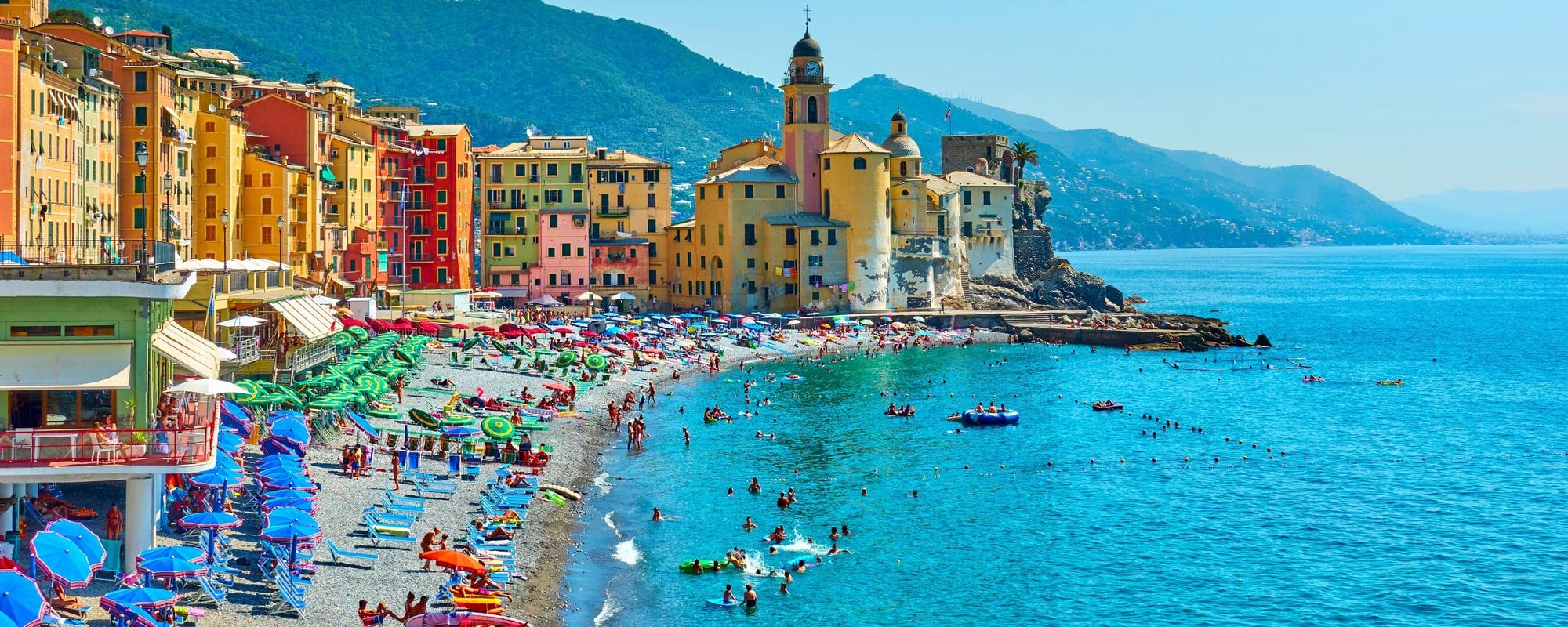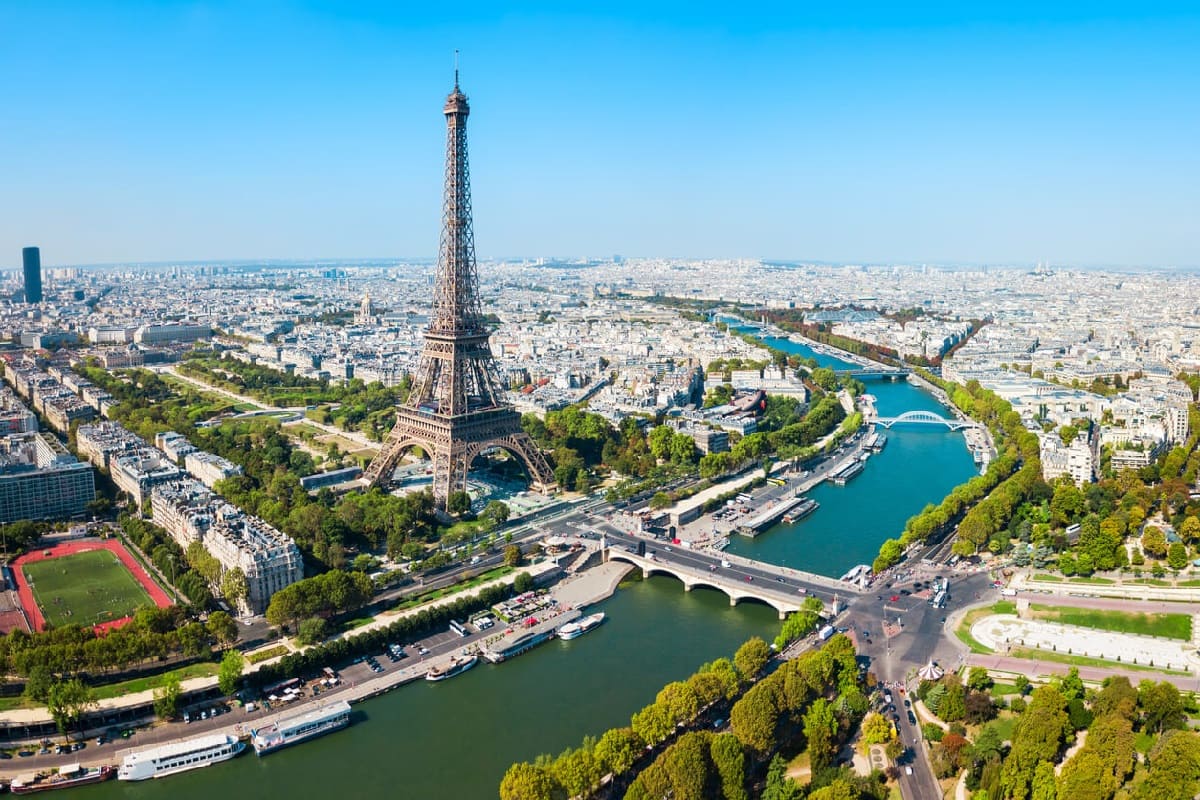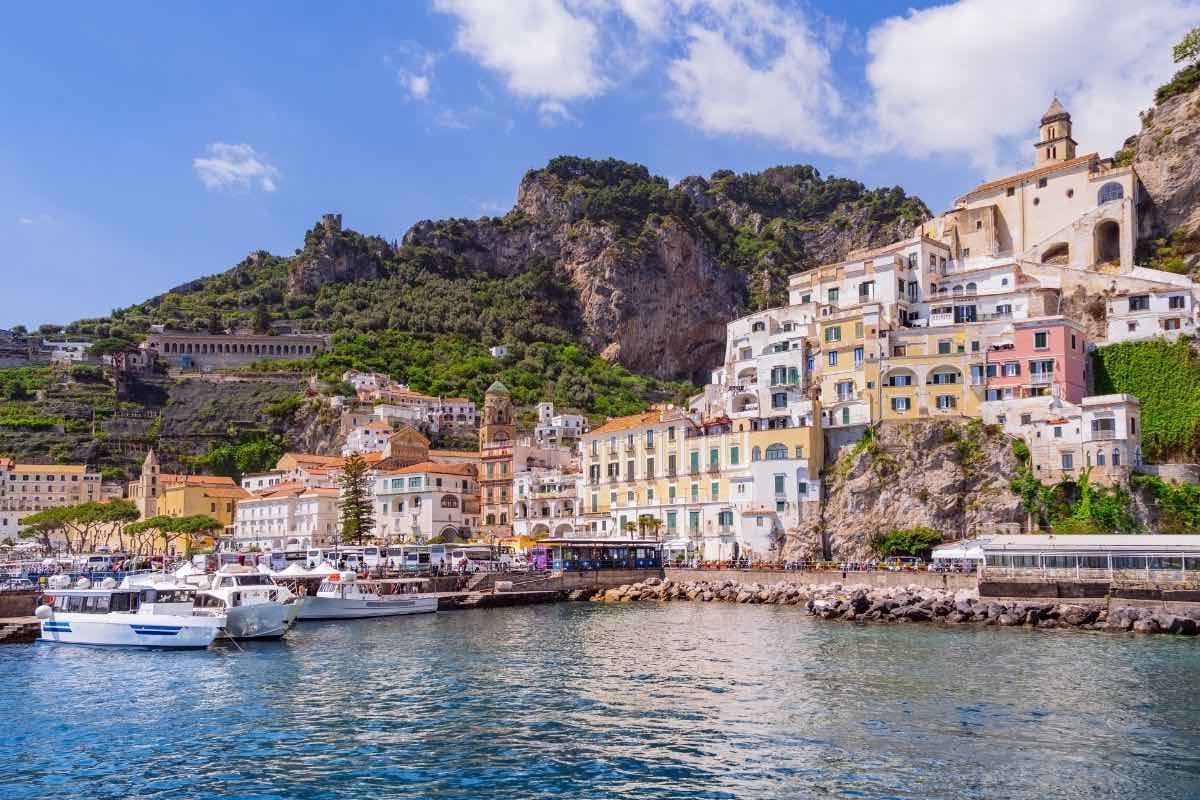Home>Weather and Climate>The Ideal Time To Travel To Italy
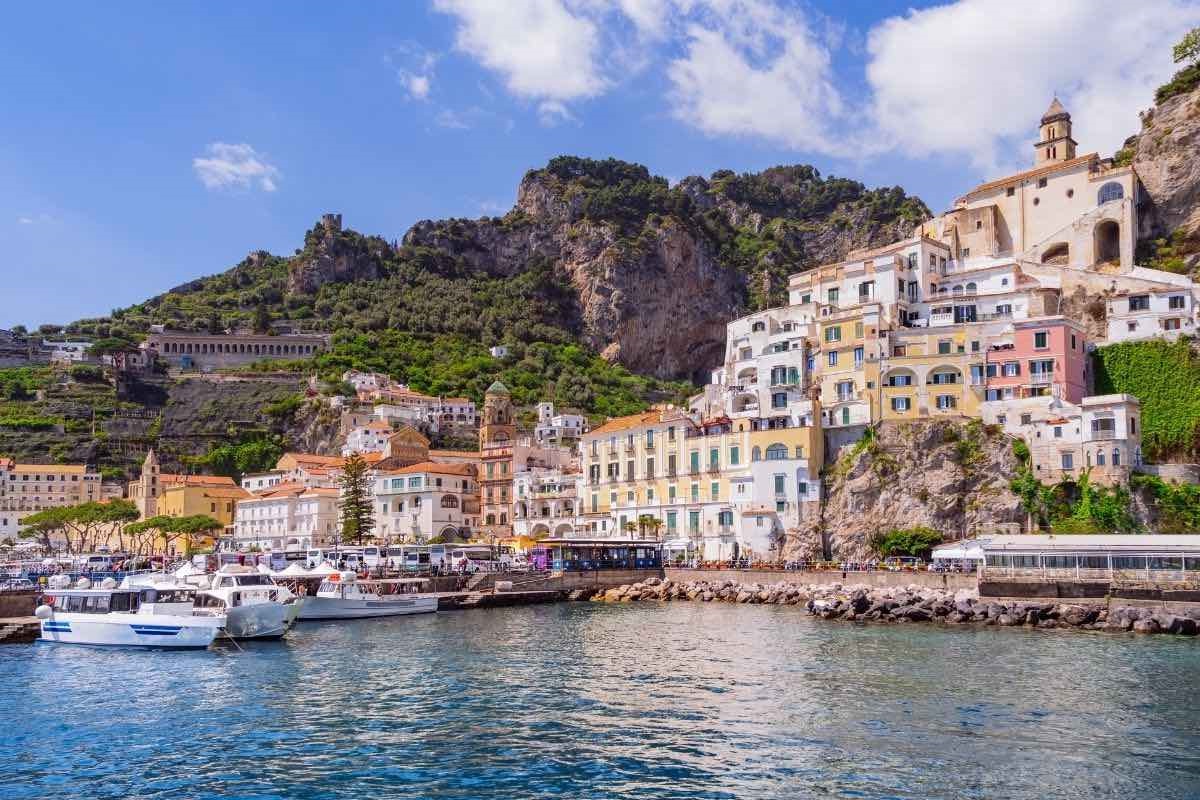

Weather and Climate
The Ideal Time To Travel To Italy
Published: March 2, 2024
Discover the best time to visit Italy based on its weather and climate. Plan your trip to experience the ideal conditions for your Italian adventure.
(Many of the links in this article redirect to a specific reviewed product. Your purchase of these products through affiliate links helps to generate commission for Temperatures.com, at no extra cost. Learn more)
Table of Contents
Best Seasons to Visit Italy
Italy, with its rich history, stunning architecture, delectable cuisine, and breathtaking landscapes, is a year-round destination that offers something for every traveler. However, the best time to visit this enchanting country largely depends on your preferences and the experiences you seek. Here's a breakdown of the best seasons to visit Italy:
Spring (March to May)
- Mild Weather: Spring in Italy brings mild temperatures, blooming flowers, and longer daylight hours, making it an ideal time to explore the country's outdoor attractions.
- Cultural Delights: This season offers a myriad of cultural events, including Easter celebrations, the Venice Biennale, and various food and wine festivals.
- Fewer Tourists: Compared to the peak summer months, spring sees fewer tourists, allowing you to enjoy popular attractions without the crowds.
Summer (June to August)
- Vibrant Atmosphere: Italy comes alive in the summer, with bustling piazzas, vibrant coastal towns, and a lively atmosphere that is perfect for soaking up the Mediterranean sun.
- Festivals and Events: From the historic Palio di Siena to the renowned opera festival in Verona, summer in Italy is synonymous with a plethora of festivals and events that showcase the country's rich cultural heritage.
- Beach Escapes: The summer months offer an excellent opportunity to indulge in Italy's coastal beauty, with the Amalfi Coast, Sicily, and Sardinia being popular destinations for beach lovers.
Autumn (September to November)
- Mild Weather and Fall Foliage: Autumn brings cooler temperatures and stunning foliage, creating a picturesque backdrop for exploring Italy's countryside and vineyard-dotted regions.
- Wine Harvest: This season marks the grape harvest, making it an ideal time for wine enthusiasts to partake in wine tours and tastings at renowned vineyards across the country.
- Cultural Events: From the Venice Film Festival to the Alba White Truffle Fair, autumn in Italy is brimming with cultural events that celebrate art, food, and music.
Winter (December to February)
- Festive Atmosphere: Italy's cities and towns are adorned with festive decorations, creating a magical ambiance during the holiday season.
- Skiing and Winter Sports: The Italian Alps and Dolomites offer excellent opportunities for winter sports enthusiasts, with world-class ski resorts and picturesque alpine landscapes.
- Cultural Immersion: Winter allows for a deeper cultural immersion, as you can partake in traditional Christmas markets, indulge in hearty winter cuisine, and witness unique local traditions.
Whether you prefer the vibrant energy of summer, the colorful foliage of autumn, the festive charm of winter, or the blooming landscapes of spring, Italy beckons with its diverse offerings throughout the year. Each season presents a unique opportunity to delve into the country's rich tapestry of history, art, and culinary delights, ensuring an unforgettable Italian experience.
Weather and Climate in Italy
Italy's diverse geography gives rise to a varied climate across the country, with the Alps in the north, the Apennine Mountains running down the center, and the Mediterranean Sea bordering the west. This results in a range of climates, from the alpine climate in the north to the Mediterranean climate in the south.
Northern Italy
In the northern regions, including cities like Milan and Venice, the climate is characterized by hot summers and cold, wet winters. The proximity to the Alps brings significant temperature variations, with the mountainous areas experiencing heavy snowfall during the winter months. The Po Valley, which stretches across northern Italy, often experiences foggy conditions during the colder months.
Central Italy
Central Italy, encompassing iconic cities such as Florence and Rome, enjoys a Mediterranean climate with hot, dry summers and mild, wet winters. The coastal areas benefit from sea breezes, moderating the summer heat, while the inland regions experience more extreme temperatures. Autumn and spring bring pleasant weather, making them ideal seasons to explore the historic sites and picturesque landscapes of central Italy.
Southern Italy and the Islands
Southern Italy, including regions like Naples and Sicily, experiences a Mediterranean climate characterized by hot, dry summers and mild, wet winters. The southern regions enjoy a longer summer season compared to the north, with temperatures often soaring above 30°C (86°F) during the peak of summer. The coastal areas and islands, such as Sardinia and Sicily, boast stunning beaches and crystal-clear waters, making them popular destinations for sun-seekers.
Read more: Italy’s February Climate Guide
Overall Climate Patterns
Throughout Italy, the coastal areas experience milder temperatures compared to the inland regions, thanks to the tempering influence of the Mediterranean Sea. The country's diverse microclimates also contribute to its renowned agricultural heritage, with regions like Tuscany and Piedmont being famous for their vineyards and olive groves.
Seasonal Variations
The seasonal variations in Italy offer distinct experiences for visitors. Spring and autumn bring mild temperatures and blooming landscapes, making them ideal for outdoor activities and cultural exploration. Summer attracts sun-seekers to the coastal regions, while winter invites travelers to the alpine resorts for skiing and winter sports.
Understanding Italy's weather and climate patterns is essential for planning a memorable visit to this captivating country. Whether you seek the warmth of the Mediterranean sun, the vibrant colors of autumn foliage, or the snowy enchantment of the Alps, Italy's diverse climate ensures there is something for every traveler throughout the year.
Popular Festivals and Events in Italy
Italy is renowned for its vibrant and diverse array of festivals and events, each offering a unique glimpse into the country's rich cultural tapestry. From religious celebrations to artistic showcases, Italy's calendar is brimming with festivities that captivate locals and visitors alike. Here are some of the most popular festivals and events that showcase Italy's cultural heritage:
Carnevale di Venezia (Venice Carnival)
The Carnevale di Venezia, held in Venice, is a world-famous carnival that dates back to the 11th century. This extravagant event features elaborate masks, colorful costumes, and grand masquerade balls, transforming the city into a mesmerizing spectacle of opulence and revelry.
Read more: Italy’s July Weather Guide
Palio di Siena
The Palio di Siena is a historic horse race that takes place in the heart of Siena's Piazza del Campo. Dating back to the medieval period, this fiercely competitive event sees ten of the city's districts (contrade) vying for victory, culminating in a thrilling display of pageantry and tradition.
Venice Biennale
The Venice Biennale is a prestigious art exhibition that takes place biennially in Venice. Showcasing contemporary art, architecture, and cinema, this international event attracts artists, critics, and art enthusiasts from around the world, making it a significant platform for artistic expression and cultural exchange.
Calcio Storico (Historical Football) in Florence
Calcio Storico, also known as historical football, is a traditional sport that originated in Renaissance Florence. This unique and intense form of football is played in historical attire, with teams representing different neighborhoods of the city, culminating in a spirited competition that honors the city's rich heritage.
Festival of the Redeemer (Festa del Redentore) in Venice
The Festival of the Redeemer is a beloved religious and cultural event in Venice, commemorating the end of the plague in the 16th century. The highlight of the festival is the spectacular fireworks display over the Venetian lagoon, accompanied by boat processions and festive gatherings.
Read more: How Does Italy’s Weather Change in October?
Umbria Jazz Festival
The Umbria Jazz Festival, held in the charming city of Perugia, is a world-renowned music festival that celebrates jazz and contemporary music. With performances by international and local artists, this festival transforms the historic streets and squares of Perugia into a vibrant celebration of musical talent and creativity.
La Festa di San Giovanni (Feast of St. John) in Florence
The Feast of St. John is a time-honored celebration in Florence, marked by a series of events, including parades, historical reenactments, and the spectacular fireworks display over the Arno River. This traditional festival pays homage to the patron saint of the city, drawing locals and visitors to partake in the jubilant festivities.
Verona Opera Festival
The Verona Opera Festival, held in the iconic Arena di Verona, is a world-class operatic event that showcases spectacular performances against the backdrop of an ancient Roman amphitheater. This renowned festival attracts opera enthusiasts from around the globe, offering an unforgettable experience of music, drama, and cultural heritage.
From the timeless traditions of the Venice Carnival to the contemporary expressions of the Venice Biennale, Italy's festivals and events provide a captivating insight into the country's artistic, historical, and religious heritage. Whether you seek the grandeur of historic pageantry, the allure of artistic innovation, or the fervor of traditional celebrations, Italy's diverse calendar of events promises an enriching and unforgettable experience for all who partake in its cultural tapestry.
Peak Tourist Seasons in Italy
Italy, with its timeless charm and diverse attractions, experiences peak tourist seasons during specific times of the year. Understanding these peak periods is crucial for travelers seeking to make the most of their Italian sojourn. The peak tourist seasons in Italy are characterized by bustling cities, vibrant coastal towns, and a myriad of cultural events that draw visitors from around the world.
Summer (June to August)
The summer months mark the peak tourist season in Italy, particularly along the coastal regions and iconic cities such as Rome, Florence, and Venice. The allure of Mediterranean sunshine, al fresco dining, and cultural events creates a vibrant atmosphere that beckons travelers seeking a quintessential Italian experience. The coastal towns of the Amalfi Coast, Cinque Terre, and Sicily witness an influx of sun-seekers, while cities like Rome and Florence bustle with tourists eager to explore historic landmarks and immerse themselves in the country's rich cultural heritage.
Easter and Spring Break (March to April)
Easter and the spring break period also constitute a peak tourist season in Italy, especially in popular tourist destinations. Cities like Rome, Florence, and Venice experience a surge in visitors during this time, drawn by the allure of mild spring weather, blooming landscapes, and a plethora of cultural events and religious celebrations. The Vatican City becomes a focal point for pilgrims and tourists alike, as they gather to partake in Easter festivities and witness the Papal Mass at St. Peter's Square.
Autumn Harvest Season (September to October)
The autumn harvest season, particularly in the wine regions of Tuscany and Piedmont, attracts a significant number of visitors eager to partake in wine tours, tastings, and cultural events celebrating the grape harvest. The picturesque countryside, adorned with vibrant foliage, provides a scenic backdrop for travelers seeking a bucolic escape. Additionally, the allure of cultural events such as the Venice Film Festival and the Alba White Truffle Fair contributes to the peak tourist influx during the autumn months.
Christmas and New Year (December to January)
The festive season of Christmas and New Year draws visitors to Italy's iconic cities, where enchanting decorations, traditional markets, and festive events create a magical ambiance. Cities like Rome, Florence, and Milan come alive with holiday cheer, offering visitors a chance to partake in seasonal traditions, witness spectacular light displays, and indulge in festive culinary delights.
Understanding the peak tourist seasons in Italy allows travelers to plan their visits strategically, taking into account factors such as weather, crowd levels, and the availability of accommodations and attractions. Whether one seeks the vibrant energy of summer, the cultural richness of Easter, the bucolic charm of autumn, or the festive magic of the holiday season, Italy's peak tourist seasons promise an enriching and unforgettable experience for visitors from near and far.
Read more: How Does Italy’s Weather Change in March?
Off-peak Travel Times in Italy
While Italy's peak tourist seasons offer vibrant energy and a myriad of cultural events, the off-peak travel times present unique opportunities for a more tranquil and immersive Italian experience. These periods, characterized by fewer crowds and distinct seasonal charms, allow travelers to delve deeper into the country's rich tapestry of history, art, and culinary delights.
Winter (January to February)
The winter months, particularly January and February, mark the off-peak travel season in Italy. While the weather may be cooler, this time offers a serene ambiance, making it ideal for exploring iconic landmarks and cultural sites without the bustling crowds. Cities like Rome, Florence, and Venice exude a quieter charm, allowing visitors to savor the architectural marvels, renowned museums, and historic streets at a leisurely pace. Additionally, the winter season presents an opportunity to witness Italy's cities adorned with festive decorations, creating a magical atmosphere that is perfect for immersive cultural experiences.
Late Autumn (November to December)
Late autumn, spanning from November to December, signifies another off-peak travel period in Italy. During this time, the country's landscapes transition into a tapestry of warm hues, offering a picturesque backdrop for leisurely exploration. The vineyard-dotted regions of Tuscany and Piedmont showcase the beauty of the autumn harvest, inviting travelers to partake in wine tastings, culinary experiences, and cultural events celebrating the season's bounty. Furthermore, the historic cities come alive with seasonal festivities, including traditional Christmas markets and vibrant holiday displays, providing a glimpse into Italy's rich cultural traditions.
Early Spring (Late February to April)
The early spring months, from late February to April, present an off-peak travel window that combines the charm of blooming landscapes with fewer tourist crowds. This period offers mild weather, making it conducive for outdoor activities such as hiking in the picturesque countryside, exploring historic gardens, and embarking on scenic drives along Italy's coastal roads. The cities and towns awaken from the winter slumber, offering a delightful blend of cultural events, art exhibitions, and culinary festivals that showcase the country's diverse heritage.
Read more: Ideal Temperature Range For Guinea Pigs
Benefits of Off-peak Travel
Traveling during the off-peak seasons in Italy provides several advantages, including lower accommodation rates, reduced wait times at popular attractions, and a more authentic interaction with local culture. It allows for unhurried exploration of renowned landmarks, intimate dining experiences at traditional trattorias, and a deeper immersion into Italy's art, history, and culinary traditions.
Embracing Italy's off-peak travel times offers a unique perspective, allowing travelers to uncover the country's hidden gems, savor its seasonal delights, and forge meaningful connections with its rich cultural heritage. Whether one seeks the tranquility of winter, the vibrant colors of autumn, or the blossoming landscapes of spring, Italy's off-peak travel times promise a rewarding and authentic journey through this captivating Mediterranean gem.
